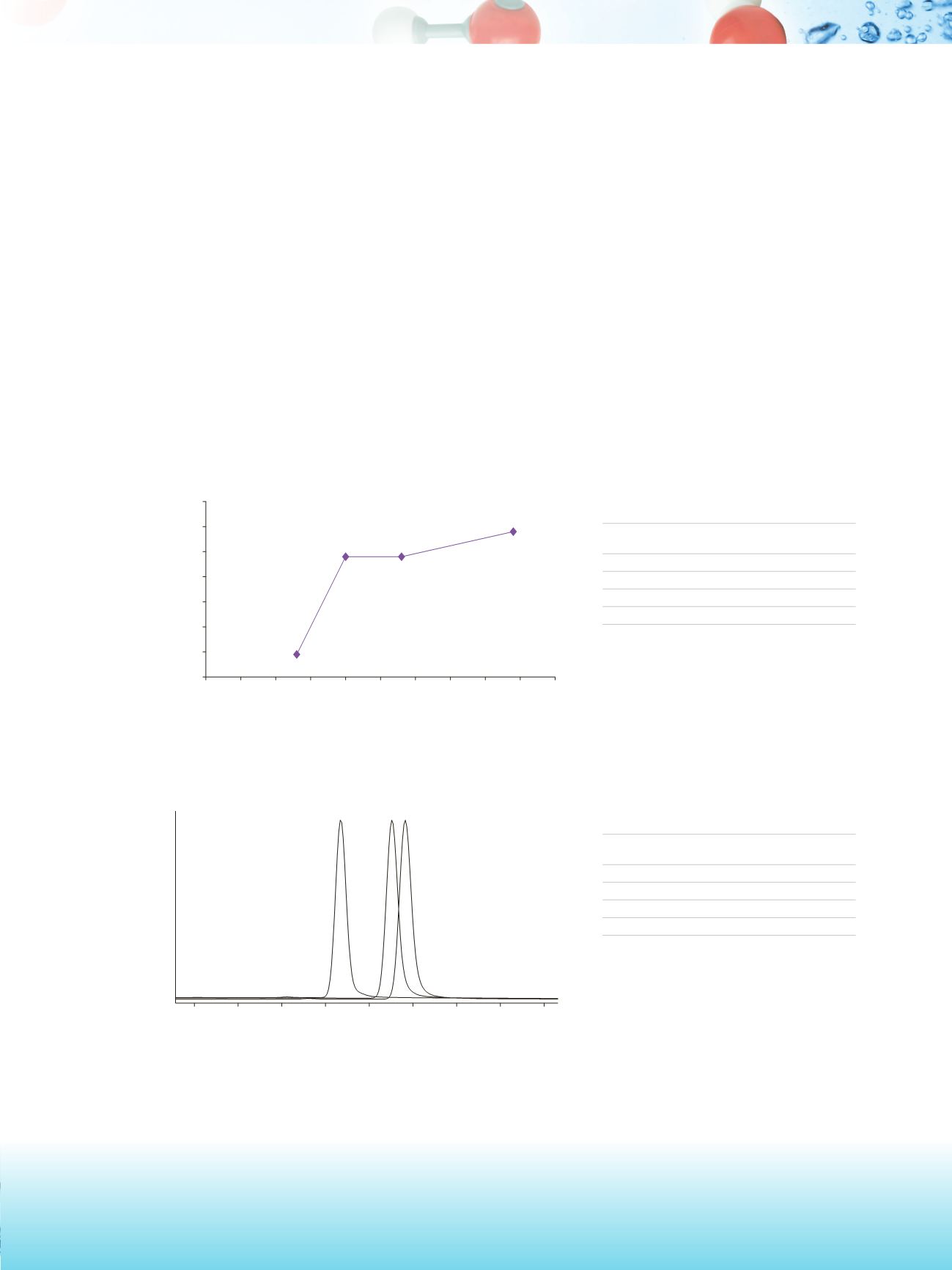
23
The effect of mobile phase buffer pH on the retention of cytidine on a bare silica phase
The charge state of the stationary phase can affect HILIC retention of ionizable compounds, depending on the mobile
phase buffer pH; electrostatic interactions between a charged stationary phase and a charged analyte can be critical,
leading to drastic variations in retention. This concept was unequivocally demonstrated by Guo and Gaiki [8], when
analyzing cytosine on an amino column. When the mobile phase buffer pH approached the cytosine pK
a1
value (~ 4.6),
cytosine became positively charged, inducing electrostatic repulsion from the positively charged amino stationary phase
and its retention dropped. The mobile phase buffer pH can also affect the stationary phase charge state; this, for example
is the case for bare silica phases, where the silanol ionization varies with the mobile phase buffer pH. At pH>4-5, the
silanols are deprotonated, making the silica surface negatively charged. This will have an effect on the retention of
positively charged analytes. This phenomenon is illustrated below with the increased retention for cytidine.
The retention of cytidine increases as the buffer pH increases from 3.3 to 6.4. As the mobile phase buffer pH increases
the proportion of deprotonated silanol groups also increases, leading to increasing electrostatic attractions between the
positively charged cytidine and the increasingly negatively charged silica surface. It is therefore very important to fine
tune the mobile phase buffer pH, when using bare silica phases for the analysis of basic compounds, in order to avoid
excessively long retention times and peak broadening.
k cytidine
Buffer pH
3.4
3.5
3.6
3.7
3.8
3.9
4
4.1
2.5
3
3.5
4
4.5
5
5.5
6
6.5
2
7
Time (min)
2.2
2
2.4
2.6
2.8
3
3.2
3.4
3.6
pH 3.3 pH 4.0 pH 6.4
Silica-based neutral phases (e.g. amide phases) can bear negative charges, due to residual silanol groups when working
within a 3−6.5 pH range [26]; this was demonstrated by the characterization testing carried out on the Accucore
150-Amide-HILIC, where some cation exchange capabilities were observed. See the column characterization details on
page 34 for further information.
Overlaid chromatograms relative to the separation of cytidine on a bare silica phase, showing an
increased retention with the mobile phase pH
Column:
Hypersil GOLD Silica
, 5 µm
100 × 4.6 mm
Mobile Phase:
90/10 acetonitrile/100 mM ammonium
formate
Flow Rate:
1.0 mL/min
Inj.Volume:
5 µL
Temp.:
30 ˚C
Detection:
248 nm
Column:
Hypersil GOLD Silica
,
5 µm
100 × 4.6 mm
Mobile Phase:
90/10 acetonitrile/100 mM ammonium
formate
Flow Rate:
1.0 mL/min
Inj.Volume:
5 µL
Temp.:
30 ˚C
Detection:
248 nm


